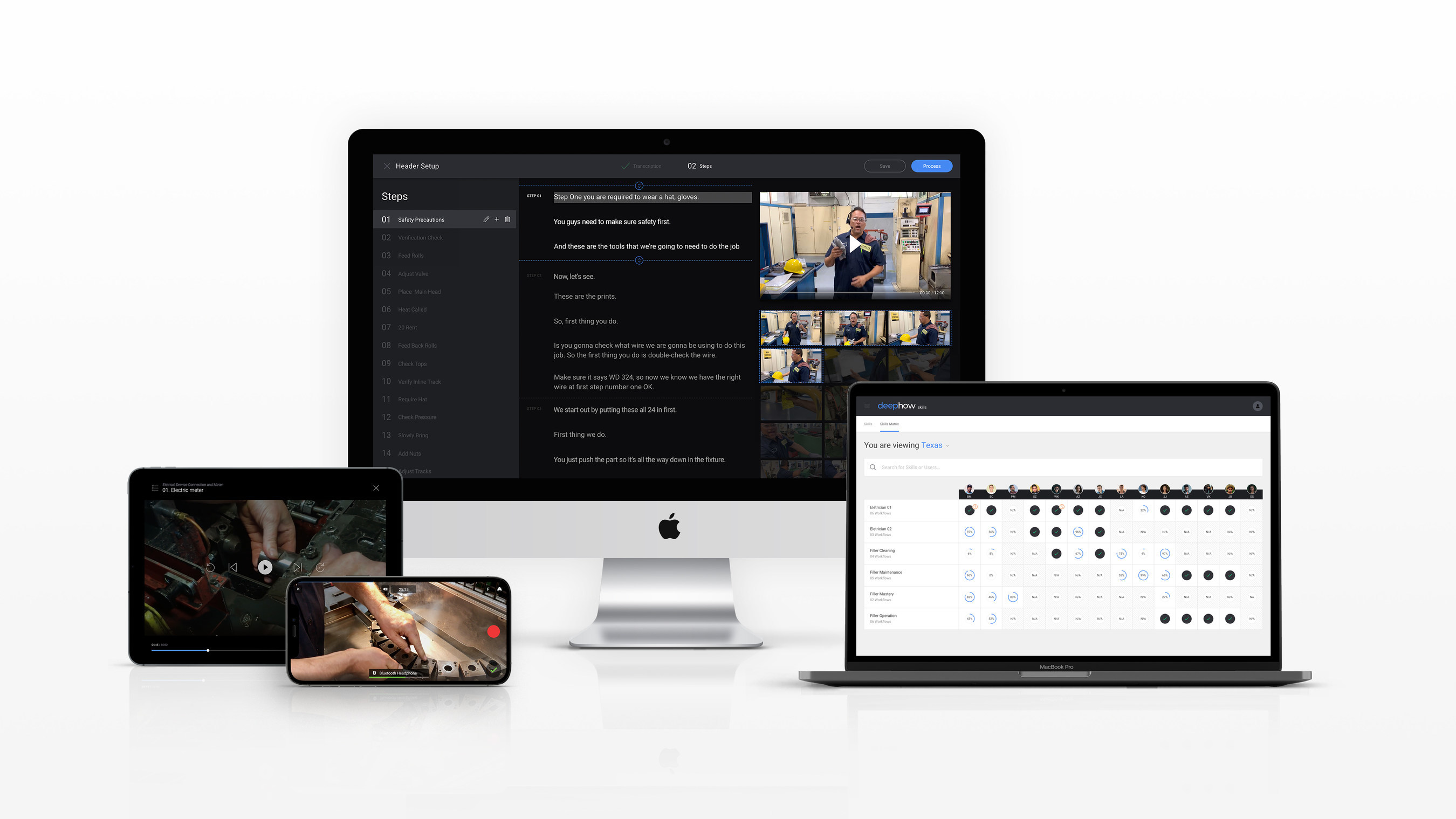DeepHow Bridges Skills Gap in Manufacturing and Field Service with AI-Powered Video Training Solution
By applying AI to reduce the cost and time associated with video production and management, DeepHow enables companies to create skills training that is rich, easy to consume, multi-lingual, and simple to distribute
DeepHow, the AI company that turns know-how into smart, how-to training videos, has officially launched its AI-powered training platform for manufacturers and field-service teams. After extensive pilots and deployment with several Fortune 100 companies, DeepHow is now making its comprehensive training system widely available. Businesses looking to bridge their skills gap can use DeepHow to efficiently capture, manage, and disseminate skills, knowledge and know-how — at a scale unheard of until now.
HR Technology News: Intellect Resources and Smartlink Health Expand Partnership


“This new platform, developed by DeepHow, will help us retain organizational knowledge and accelerate our industry 4.0 initiatives,” said Kevin Lemke, VP of strategy for Stanley Black & Decker’s innovation group, Stanley X. “Through more efficient training, we will strengthen our production capabilities and increase our responsiveness to customers.”
Stanley Black & Decker is a strategic investor in DeepHow and partners with DeepHow’s innovative AI platform in its workforce readiness and up-skilling programs.
Video has emerged as the preferred medium for capturing crucial skills such as machine set-up and operation, safety procedures, diagnostics, and maintenance. It is also readily disseminated as training content that can easily be consumed by other team members and trainees on a wide range of devices. But creating and managing engaging video training is expensive, so its use has been limited.
HR Technology News: Penn Foster Acquires Pioneering Career Discovery Platform
“In-house production of one minute of training videos takes about one hour and costs somewhere between $500 and $1,000. That’s why, despite its obvious benefits and appeal to workers, video training has simply not been a scalable training solution,” said Dr. Sam Zheng, CEO and co-founder of DeepHow. “Our goal is to make creating, editing, and updating a professional training video as easy as word processing.”
Recent advances in AI, NLP (natural language processing), computer vision, and the knowledge graph are revolutionizing how knowledge is captured, digitized, and organized. DeepHow combines these AI technologies with the latest skills learning theory from psychology to deliver a solution that eliminates the cost and time issues associated with producing training videos, and more importantly improves the effectiveness of learning and know-how transfer.
Companies that implement DeepHow close their skills gap and maximize training success while reducing training costs by a factor of 10. Factory workers and tradespeople who use DeepHow can acquire new skills while reducing their training time by 40% — valuable hours that translate into manufacturing productivity.
“DeepHow is helping AB InBev perform critical tasks and execute employee upskilling. As a component of our Dynamic SOPs initiative, DeepHow accelerates our learning and standardizes procedures,” said Shannon Kellerman, global manager and Dynamic SOPS product owner at Anheuser-Busch InBev. “The ability to quickly create these workflows and embed them into our SOPs allows us to share standards and ways of working across the globe regardless of Language barriers. A team member in St Louis can learn and execute a best practice from an expert in Rio de Janeiro.”
“With DeepHow, video training becomes cost-effective and scalable because you can quickly capture and build a dynamic library of up-to-date skills training content that is easily updated without video-editing skills,” added Zheng. “The platform enables users to quickly find the information they need, supports on-the job learning, and helps HR and operation teams manage skills training and allocation.”
HR Technology News: Benefit Advisors Network, Nectar Partner to Close Worker Recognition Gap

